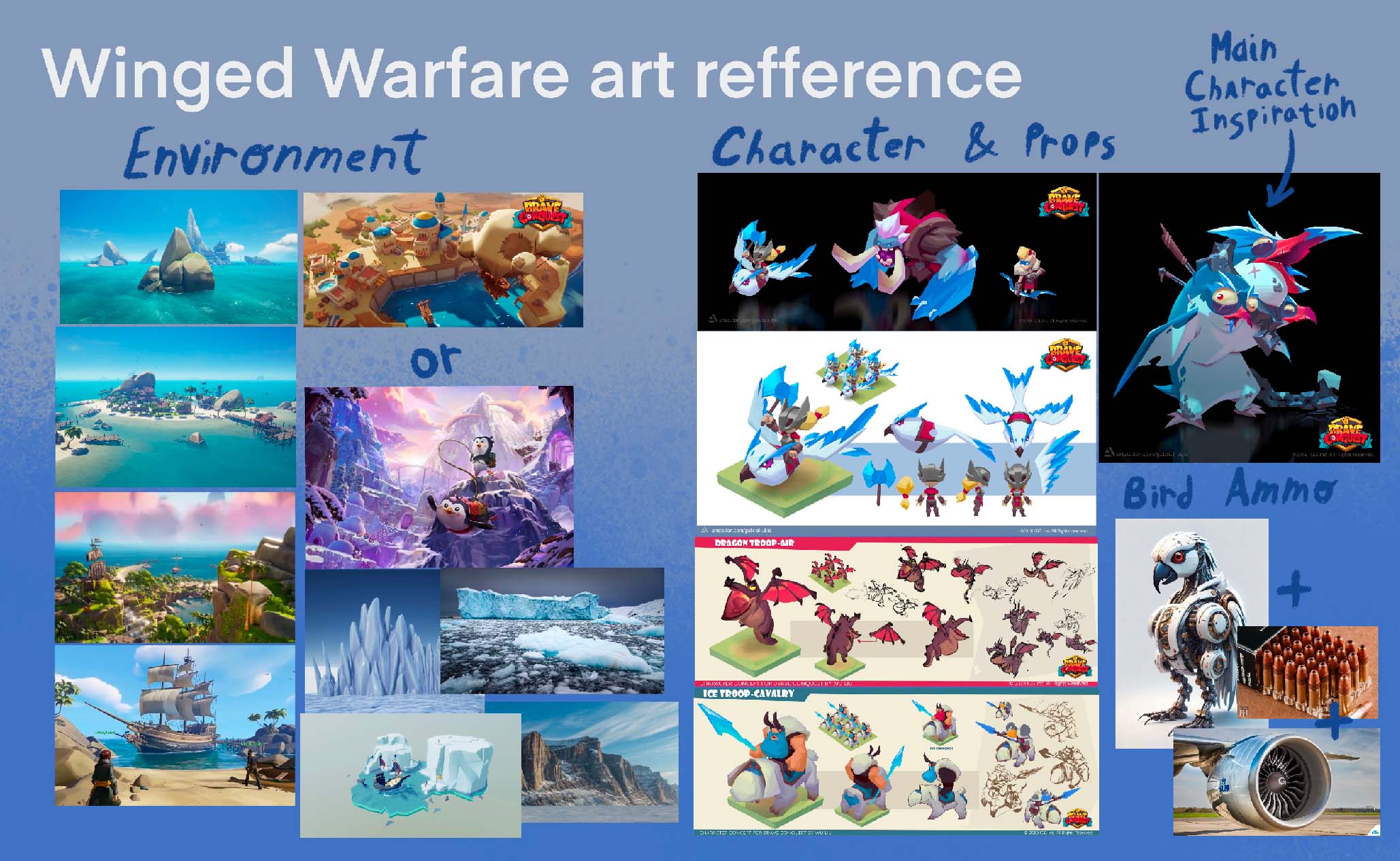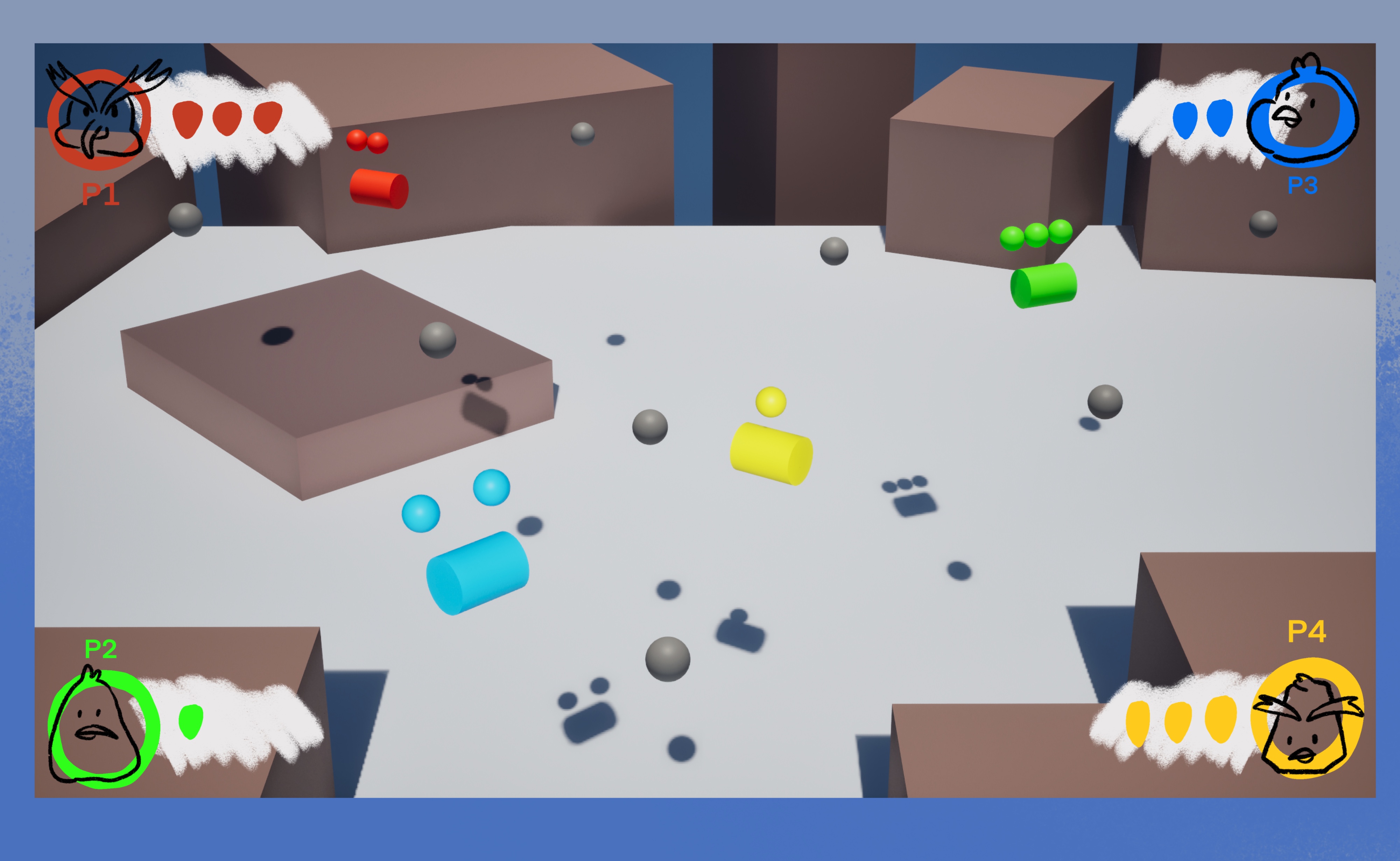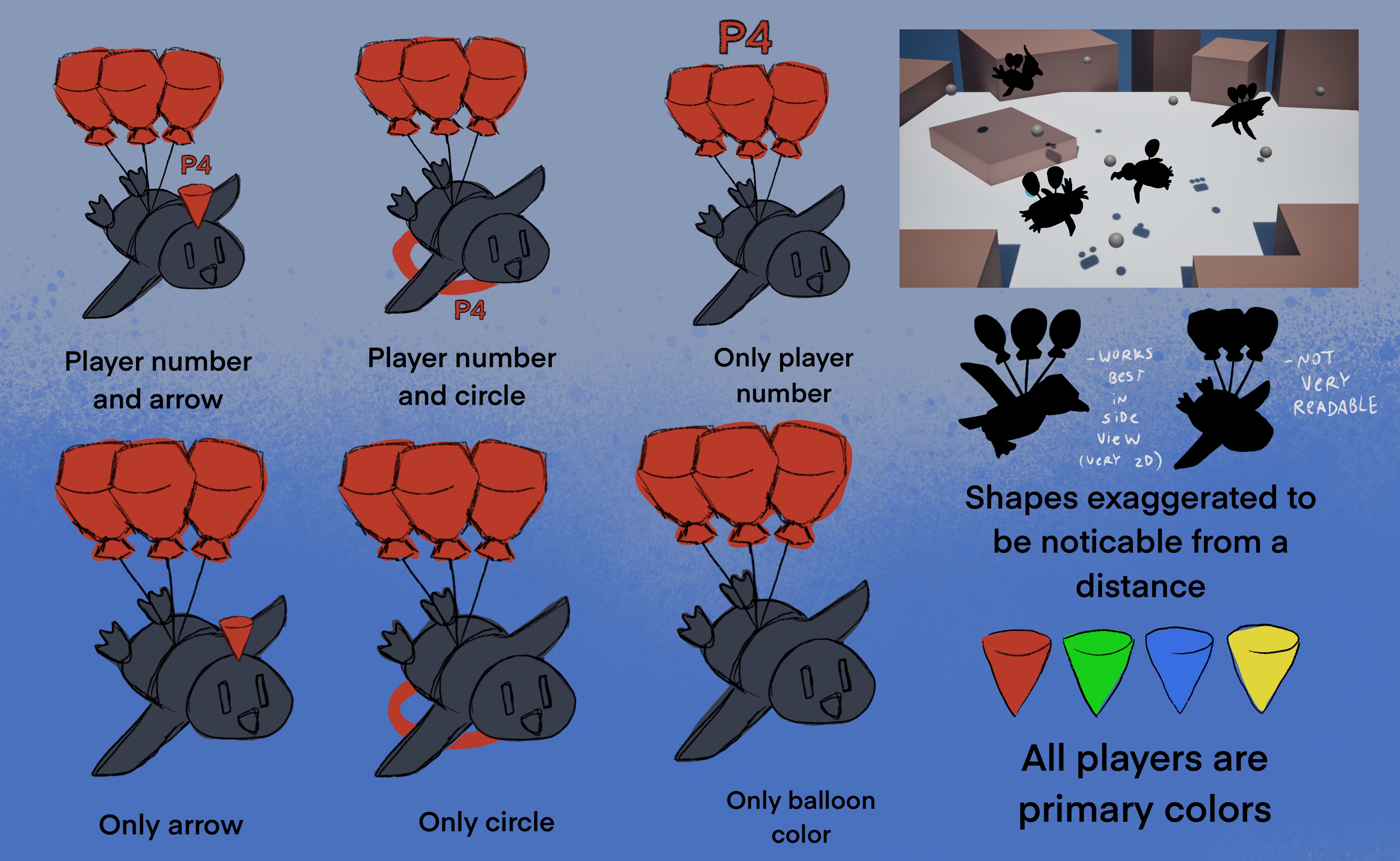Devlog 1: Taking Flight
Introduction
Welcome to the Penguin Flight Academy dear cadettes! We are located in Madagascar where you will be competing with your peers to earn the Ultimate-Royal-Airforce-FlightMaster title. Only one of you will be able to obtain this exclusive title, so it is up to you to prove your courage, wit, competitive spirit and worth.
Don’t trust anyone, you are in this alone. Good luck and may the wind guide your wings to victory.
This game is brought to you by:
Annija Bodniece and Adam Prinz, responsible for arts,
Mikail Kahya and Fleur Slabbinck, in control of the development.
To be able to fly, the penguins get assisted by balloons. Each of them has 3 balloons to start with, but those can be popped. Birds can be snatched up from the sky, and used as tools to eliminate balloons of other penguins or to protect from dangers of others.
Penguins that lost all balloons can no longer fly and are therefore eliminated. Only the last one hanging in there is worthy of the ability to fly.
Art
Style
We want our game to have a distinct style that would be appealing in a casual multiplayer pvp setting. It should be simplistic, distinct and easily readable, since things can get pretty heated amidst battle.
There were multiple games that inspired us, such as Sea of Thieves, for its painterly art style, Fall Guys for its extremely simplified shapes and vivid colors and Ghost Knight: a Dark Tale for its distinction between foreground and background elements. But as our main inspiration , at least in stylisation and shapes, we chose Brave conquest.

One of our main points of research this week was whether to make the game in a sideways angle (so-more 2D and most likely based in Unity) or top down (more 3D and likely based in Unreal Engine). We made two quick mock ups to generate how this would look, and we unanimously decided the top down version looks far more appealing and fun.

Another aspect the artists researched this week was how to distinguish the player and make the characters readable from a distance. We compared different indicators for players based on their color (keeping it to primary colors for easy distinction). We also briefly looked into the shaders we should use, and next week we will delve deeper in that, researching how certain shaders look and which ones fit the style the best (cell shader, toon shader, etc).

Technicalities
Alongside other tech doc questions, we researched the unit system and which one would fit us best. And since we are leaning towards using Unreal, we decided to use the metric system, more specifically, to adapt to the Unreal engine system of 1 unit = 1 centimeter, so we researched which export settings we need in Autodesk Maya.
Animation
As movement in our game is based on floating above the ground using balloons, the animation required for the game has been greatly reduced. As such our team has decided to animate the rest of the needed movement by ourselves. However, as nobody on our team has ever animated anything, we decided to first do some research about simple animation. After that the prototype was done in Maya with a bird model downloaded from the internet, however the model needed to be rigged, therefore additional research was required in order to properly go through with the prototype. After that, the first animation of the bird flight was done, which was just a rotation of its wings at the base near its main body. After that more advanced animation was attempted, in order to get a better bird-like feeling.
Coding
Gameplay loop
A lot had to be done for this week for the current patch. From movement implementation, to spawning objects and rudimentary AI. For all of this to be done, there had to be a focus on one engine that allowed for their systems to be used for rapid development, queue Unreal. With Unreal’s character movement component and their damage interface the basics were in place. For the AI they had behavior trees that would allow for complex behavior being added over time. Currently the AI picks a target and slightly curves towards that target. This target has to be in front of them within a cone. All of these parameters can be changed through the behavior tree, even allowing quick iteration during the design phase. There however is no deleting of the parrots that didn’t hit a target which will result in worse performance in a long fight.
Spawning of the pick-ups is based on a timer and a max amount of pickups on the map. These timers are in a random interval and can feel overwhelming if all the random values are at the low part of the range. A more complex and balanced system will be necessary and a heavy focus.
Multiplayer
In order to find the most fitting Game Engine, some experimenting with the multiplayer aspects of both Unity and Unreal Engine seemed in place.
Multiplayer in Unity is very intertwined with the character controller component. Applying physics and making your own movement can be harder due to this. Unreal does not have this problem however and just uses their player controllers separate from the pawn. Only the gamemode is responsible for the implementation, making it way less complicated.
Taking all this into consideration, Unreal Engine is by far the better candidate in this department.
Files
Get WingedWarfare
WingedWarfare
| Status | Released |
| Authors | mikailkahya, aprinz, AnnijaB, shlab |
More posts
- The destinationMay 28, 2024
- Devlog 10: Polishing our weaponsMay 22, 2024
- Devlog 9: Last HurrahMay 15, 2024
- Devlog 8: Just beyond the horizonMay 09, 2024
- Devlog 7: Switching to next gearMay 01, 2024
- Devlog 6: End of the first sprintApr 24, 2024
- Devlog 5: Navigating the skiesApr 17, 2024
- Devlog 4: The start of a marathonMar 28, 2024
- Devlog 3: Time for warfareMar 20, 2024
- Devlog 2: Into the AntarcticMar 14, 2024

Leave a comment
Log in with itch.io to leave a comment.